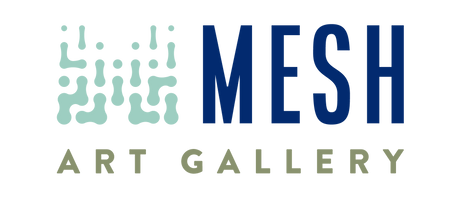Grietje Postma
Dutch, born in Dronten, 1961
In 1984 Grieje Postma enrolls at the Academie Minerva in the town of Groningen, in the Northern tip of the country. She has an eye on the painting curriculum, hoping to find her voice in rendering the deserted landscape of her lowlands. She quickly realizes her propensity for drawn lines in her compositions. She decides to take a printmaking class, thinking it may develop her graphic sensibility. Inspired by the docent Wim van Veen, she finds her way through the first technical difficulties of woodcut techniques and never looks back.

Untitled - 1993-III
By the time she leaves school in 1989 she is a printmaker; and she has found her technique in color woodcut reduction. By carving a single plank of wood in consecutive states, all colors are printed from one matrix. Unlike most artists who have practiced the reduction method, and there are few, she works from dark to light. The complete plank of wood is printed in the darkest color on all sheets of the edition. She then cleans off the matrix and carves it for a first time, taking out those areas she wishes to show in this first darkest color, all the while printing over other areas with a second, lighter color. Thus carving the lines for one color at a time and printing it on the whole edition at once, she ends up with a plank almost completely carved away, with only the lightest color highlights still raised on the plank. This is a one way street: as she carves each color, in successive states, she takes away the very lines needed to print darker (earlier) colors. Because darker colors have been mostly covered by lighter ones, most of Postma’s compositions often feel “animated”. Looming through the tiny unevenness of inking, which are caused by the texture and the grain of the wood, they viewer detects colors that have mostly been hidden. This “translucent” quality gives great depth to her landscapes.

Postma combines this technique with an uncanny ability for simplicity. The branches of trees, the stems of flowers, blades of grass, all make up the linear texture of compositions of great austerity. Rather than render a reality, she draws with these lines colorful ambiances; she creates mood and uses outlines to capture our gaze. Her lines almost never force the eye in a particular direction. The slightly surreal quality of light and color very much relaxes the eye: a contemplative landscape shimmers on the retina. As observers of this outdoor view, we often do not feel exposed to the elements. She makes us take a step back, as if sheltered behind a pane of glass. We are warm, admiring cool and cold landscapes from fall, spring and winter. Only rarely does the viewer feel completely part of the surrounding landscape.

Grietje Postma has been carving a few color woodcuts each year since 1988. Averaging about five compositions each year, her oeuvre only amounts to about one hundred twenty-five prints to date. She prints her planks with the greatest of care in small editions of fifteen to twenty-five. Her thick sheets or Van Gelder paper have pristine margins and registration is impeccable. Her work has been shown throughout The Netherlands by many galleries and acquired by foremost collectors. Because of her notoriety in her own country and the very limited amount of work produced, her work is scarce and most editions before 2005 sold out.

It is a pleasure to be able to acquire these great prints and to offer them to an American audience. While inspired by the lowlands of the northern Netherlands, these landscapes resonate with many who have lived in the Midwest. By departing from reality to render a “composed” and personal landscape, her aesthetic sense creates ultimately universal compositions.
